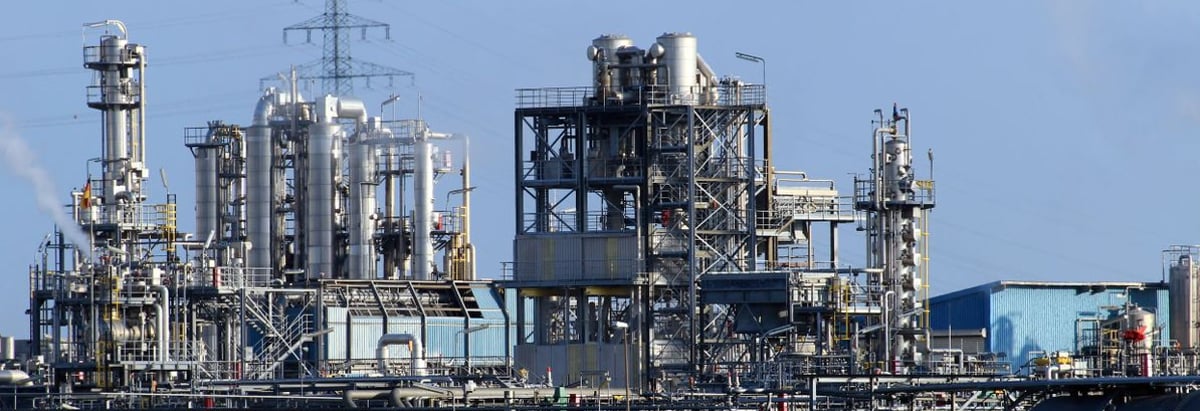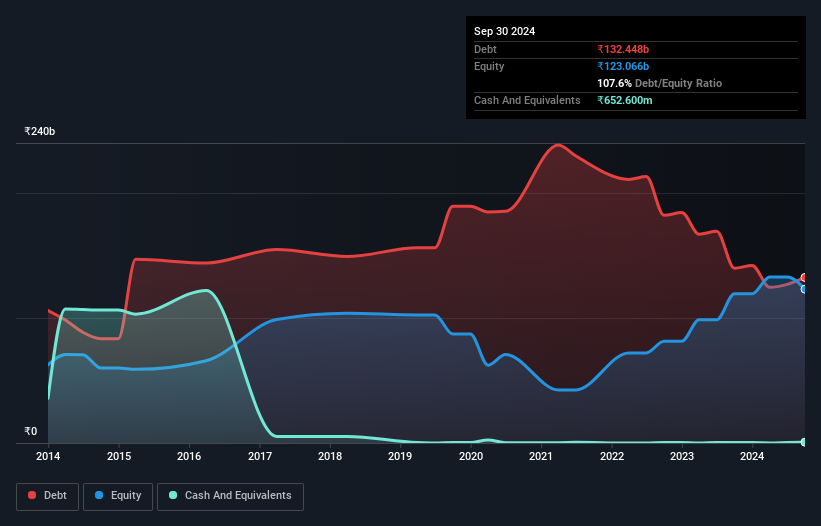- India
- /
- Oil and Gas
- /
- NSEI:MRPL
Does Mangalore Refinery and Petrochemicals (NSE:MRPL) Have A Healthy Balance Sheet?

Howard Marks put it nicely when he said that, rather than worrying about share price volatility, 'The possibility of permanent loss is the risk I worry about... and every practical investor I know worries about.' When we think about how risky a company is, we always like to look at its use of debt, since debt overload can lead to ruin. We note that Mangalore Refinery and Petrochemicals Limited (NSE:MRPL) does have debt on its balance sheet. But the more important question is: how much risk is that debt creating?
Why Does Debt Bring Risk?
Debt is a tool to help businesses grow, but if a business is incapable of paying off its lenders, then it exists at their mercy. Part and parcel of capitalism is the process of 'creative destruction' where failed businesses are mercilessly liquidated by their bankers. However, a more usual (but still expensive) situation is where a company must dilute shareholders at a cheap share price simply to get debt under control. Of course, the upside of debt is that it often represents cheap capital, especially when it replaces dilution in a company with the ability to reinvest at high rates of return. When we think about a company's use of debt, we first look at cash and debt together.
View our latest analysis for Mangalore Refinery and Petrochemicals
What Is Mangalore Refinery and Petrochemicals's Debt?
You can click the graphic below for the historical numbers, but it shows that Mangalore Refinery and Petrochemicals had ₹132.4b of debt in September 2024, down from ₹139.8b, one year before. Net debt is about the same, since the it doesn't have much cash.

How Healthy Is Mangalore Refinery and Petrochemicals' Balance Sheet?
We can see from the most recent balance sheet that Mangalore Refinery and Petrochemicals had liabilities of ₹128.1b falling due within a year, and liabilities of ₹94.9b due beyond that. Offsetting this, it had ₹652.6m in cash and ₹46.5b in receivables that were due within 12 months. So it has liabilities totalling ₹175.9b more than its cash and near-term receivables, combined.
Mangalore Refinery and Petrochemicals has a market capitalization of ₹294.6b, so it could very likely raise cash to ameliorate its balance sheet, if the need arose. But we definitely want to keep our eyes open to indications that its debt is bringing too much risk.
In order to size up a company's debt relative to its earnings, we calculate its net debt divided by its earnings before interest, tax, depreciation, and amortization (EBITDA) and its earnings before interest and tax (EBIT) divided by its interest expense (its interest cover). The advantage of this approach is that we take into account both the absolute quantum of debt (with net debt to EBITDA) and the actual interest expenses associated with that debt (with its interest cover ratio).
Mangalore Refinery and Petrochemicals's debt is 3.4 times its EBITDA, and its EBIT cover its interest expense 2.5 times over. Taken together this implies that, while we wouldn't want to see debt levels rise, we think it can handle its current leverage. Even worse, Mangalore Refinery and Petrochemicals saw its EBIT tank 69% over the last 12 months. If earnings keep going like that over the long term, it has a snowball's chance in hell of paying off that debt. When analysing debt levels, the balance sheet is the obvious place to start. But it is future earnings, more than anything, that will determine Mangalore Refinery and Petrochemicals's ability to maintain a healthy balance sheet going forward. So if you want to see what the professionals think, you might find this free report on analyst profit forecasts to be interesting.
Finally, a company can only pay off debt with cold hard cash, not accounting profits. So the logical step is to look at the proportion of that EBIT that is matched by actual free cash flow. During the last three years, Mangalore Refinery and Petrochemicals generated free cash flow amounting to a very robust 88% of its EBIT, more than we'd expect. That puts it in a very strong position to pay down debt.
Our View
Neither Mangalore Refinery and Petrochemicals's ability to grow its EBIT nor its interest cover gave us confidence in its ability to take on more debt. But the good news is it seems to be able to convert EBIT to free cash flow with ease. Taking the abovementioned factors together we do think Mangalore Refinery and Petrochemicals's debt poses some risks to the business. So while that leverage does boost returns on equity, we wouldn't really want to see it increase from here. When analysing debt levels, the balance sheet is the obvious place to start. However, not all investment risk resides within the balance sheet - far from it. These risks can be hard to spot. Every company has them, and we've spotted 3 warning signs for Mangalore Refinery and Petrochemicals (of which 1 is concerning!) you should know about.
Of course, if you're the type of investor who prefers buying stocks without the burden of debt, then don't hesitate to discover our exclusive list of net cash growth stocks, today.
New: Manage All Your Stock Portfolios in One Place
We've created the ultimate portfolio companion for stock investors, and it's free.
• Connect an unlimited number of Portfolios and see your total in one currency
• Be alerted to new Warning Signs or Risks via email or mobile
• Track the Fair Value of your stocks
Have feedback on this article? Concerned about the content? Get in touch with us directly. Alternatively, email editorial-team (at) simplywallst.com.
This article by Simply Wall St is general in nature. We provide commentary based on historical data and analyst forecasts only using an unbiased methodology and our articles are not intended to be financial advice. It does not constitute a recommendation to buy or sell any stock, and does not take account of your objectives, or your financial situation. We aim to bring you long-term focused analysis driven by fundamental data. Note that our analysis may not factor in the latest price-sensitive company announcements or qualitative material. Simply Wall St has no position in any stocks mentioned.
About NSEI:MRPL
Mangalore Refinery and Petrochemicals
Engages in the manufacture and sale of refined petroleum products in India and internationally.
Average dividend payer with moderate growth potential.
Similar Companies
Market Insights
Community Narratives




